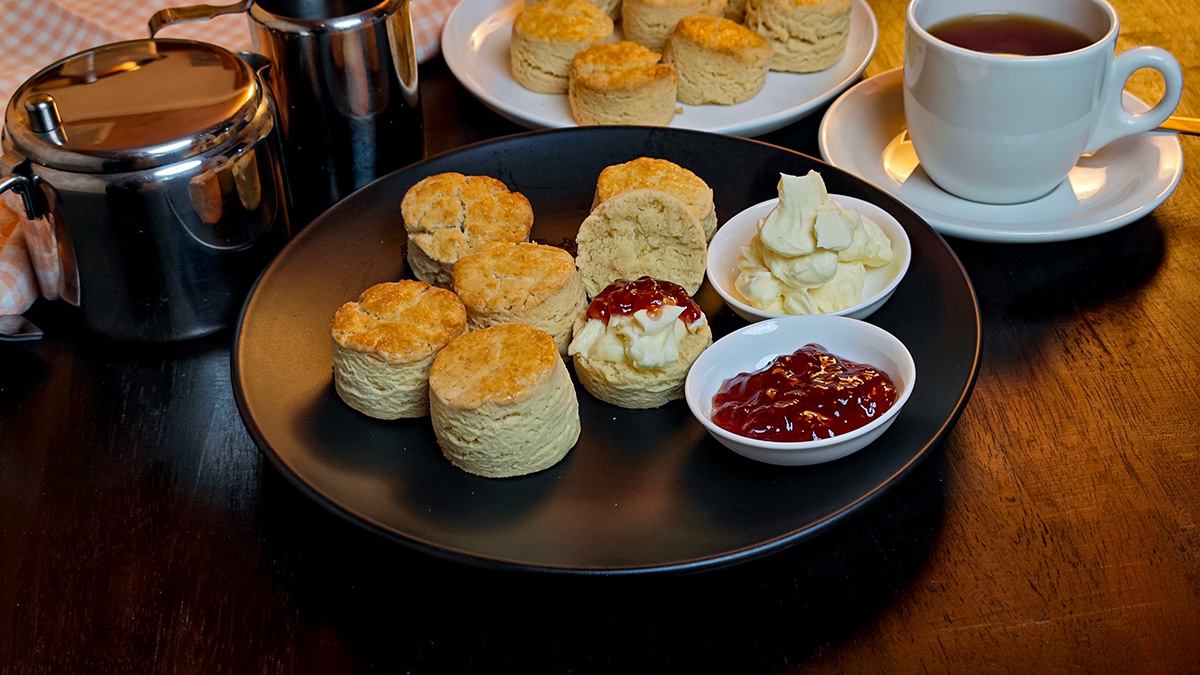| Clem's scones |
|
Scones (see note below) are
a classic bakery item for English afternoon tea. Typical are
Devonshire Teas where scones are consumed with strawberry jam
and whipped cream.
Dice butter into
pieces and coarsely rub together with the flour. |
|
Making a small
portion of whipped cream If you wish to make your own cream for the afternoon tea and do not want to use ready-made stuff, here is how to make a small portion just enough for the two or three scones which you consume:
|
|
|
18 April 2021 / updated 30
April 2024
Created by Clem Kuek
